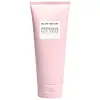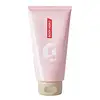What's inside
What's inside
 Key Ingredients
Key Ingredients

 Benefits
Benefits

 Concerns
Concerns

 Ingredients Side-by-side
Ingredients Side-by-side

Water
Skin ConditioningC12-15 Alkyl Benzoate
AntimicrobialGlycerin
HumectantC13-15 Alkane
SolventHydrogenated Ethylhexyl Olivate
EmollientArachidyl Alcohol
EmollientCapryloyl Glycerin/Sebacic Acid Copolymer
Skin ConditioningDiheptyl Succinate
EmollientBehenyl Alcohol
EmollientCetyl Alcohol
EmollientCitrullus Lanatus Fruit Extract
Skin ConditioningMangifera Indica Seed Butter
Skin ConditioningCitrullus Lanatus Seed Oil
EmollientSodium Hyaluronate
HumectantHibiscus Sabdariffa Flower Extract
Skin ConditioningSodium Hyaluronate Crosspolymer
HumectantHyaluronic Acid
HumectantHydrolyzed Hyaluronic Acid
HumectantPlatonia Insignis Seed Butter
EmollientHydrolyzed Glycosaminoglycans
HumectantHydrolyzed Gardenia Florida Extract
AntioxidantCoffea Arabica Fruit Extract
AntioxidantEquisetum Arvense Extract
AstringentHelianthus Annuus Seed Oil
EmollientArachidyl Glucoside
EmulsifyingTocopherol
AntioxidantPentylene Glycol
Skin ConditioningPolyacrylate Crosspolymer-6
Emulsion StabilisingPropanediol
SolventHydroxyethyl Acrylate/Sodium Acryloyldimethyl Taurate Copolymer
Emulsion StabilisingHydrogenated Olive Oil Unsaponifiables
EmollientCaprylyl Glycol
EmollientChlorphenesin
AntimicrobialEthylhexylglycerin
Skin ConditioningTrisodium Ethylenediamine Disuccinate
Myristyl Alcohol
EmollientStearyl Alcohol
EmollientLauryl Alcohol
EmollientSodium Hydroxide
BufferingBenzyl Glycol
SolventMaltodextrin
AbsorbentRaspberry Ketone
MaskingPhenoxyethanol
PreservativeLimonene
PerfumingHexyl Cinnamal
PerfumingParfum
MaskingWater, C12-15 Alkyl Benzoate, Glycerin, C13-15 Alkane, Hydrogenated Ethylhexyl Olivate, Arachidyl Alcohol, Capryloyl Glycerin/Sebacic Acid Copolymer, Diheptyl Succinate, Behenyl Alcohol, Cetyl Alcohol, Citrullus Lanatus Fruit Extract, Mangifera Indica Seed Butter, Citrullus Lanatus Seed Oil, Sodium Hyaluronate, Hibiscus Sabdariffa Flower Extract, Sodium Hyaluronate Crosspolymer, Hyaluronic Acid, Hydrolyzed Hyaluronic Acid, Platonia Insignis Seed Butter, Hydrolyzed Glycosaminoglycans, Hydrolyzed Gardenia Florida Extract, Coffea Arabica Fruit Extract, Equisetum Arvense Extract, Helianthus Annuus Seed Oil, Arachidyl Glucoside, Tocopherol, Pentylene Glycol, Polyacrylate Crosspolymer-6, Propanediol, Hydroxyethyl Acrylate/Sodium Acryloyldimethyl Taurate Copolymer, Hydrogenated Olive Oil Unsaponifiables, Caprylyl Glycol, Chlorphenesin, Ethylhexylglycerin, Trisodium Ethylenediamine Disuccinate, Myristyl Alcohol, Stearyl Alcohol, Lauryl Alcohol, Sodium Hydroxide, Benzyl Glycol, Maltodextrin, Raspberry Ketone, Phenoxyethanol, Limonene, Hexyl Cinnamal, Parfum
Water
Skin ConditioningDimethicone
EmollientNeopentyl Glycol Diheptanoate
EmollientIsononyl Isononanoate
EmollientCetearyl Alcohol
EmollientButylene Glycol
HumectantPropanediol
SolventGlycerin
HumectantOlea Europaea Fruit Oil
MaskingPEG-40 Hydrogenated Castor Oil
EmulsifyingButyrospermum Parkii Butter
Skin ConditioningHydrogenated Olive Oil
Skin ConditioningOlea Europaea Oil Unsaponifiables
Skin ConditioningMica
Cosmetic ColorantEvodia Rutaecarpa Fruit Extract
Skin ConditioningTamarindus Indica Fruit Extract
Skin ConditioningAlaria Esculenta Extract
Skin ProtectingCereus Grandiflorus Flower Extract
Skin ConditioningOpuntia Tuna Flower/Stem Extract
Skin ConditioningYucca Schidigera Leaf/Root/Stem Extract
CleansingCetearyl Glucoside
EmulsifyingCaprylyl Glycol
EmollientCaprylic/Capric Triglyceride
MaskingPotassium Cetyl Phosphate
EmulsifyingSodium Polyacrylate
AbsorbentHydrogenated Polydecene
EmollientCaprylhydroxamic Acid
Xanthan Gum
EmulsifyingSodium Hydroxide
BufferingPPG-5-Laureth-5
EmollientCitric Acid
BufferingTin Oxide
AbrasiveAcrylates/C10-30 Alkyl Acrylate Crosspolymer
Emulsion StabilisingParfum
MaskingLinalool
PerfumingCitronellol
PerfumingGeraniol
PerfumingHydroxycitronellal
PerfumingLimonene
PerfumingCI 77891
Cosmetic ColorantWater, Dimethicone, Neopentyl Glycol Diheptanoate, Isononyl Isononanoate, Cetearyl Alcohol, Butylene Glycol, Propanediol, Glycerin, Olea Europaea Fruit Oil, PEG-40 Hydrogenated Castor Oil, Butyrospermum Parkii Butter, Hydrogenated Olive Oil, Olea Europaea Oil Unsaponifiables, Mica, Evodia Rutaecarpa Fruit Extract, Tamarindus Indica Fruit Extract, Alaria Esculenta Extract, Cereus Grandiflorus Flower Extract, Opuntia Tuna Flower/Stem Extract, Yucca Schidigera Leaf/Root/Stem Extract, Cetearyl Glucoside, Caprylyl Glycol, Caprylic/Capric Triglyceride, Potassium Cetyl Phosphate, Sodium Polyacrylate, Hydrogenated Polydecene, Caprylhydroxamic Acid, Xanthan Gum, Sodium Hydroxide, PPG-5-Laureth-5, Citric Acid, Tin Oxide, Acrylates/C10-30 Alkyl Acrylate Crosspolymer, Parfum, Linalool, Citronellol, Geraniol, Hydroxycitronellal, Limonene, CI 77891
 Reviews
Reviews

Ingredients Explained
These ingredients are found in both products.
Ingredients higher up in an ingredient list are typically present in a larger amount.
Caprylyl Glycol is a humectant and emollient, meaning it attracts and preserves moisture.
It is a common ingredient in many products, especially those designed to hydrate skin. The primary benefits are retaining moisture, skin softening, and promoting a healthy skin barrier.
Though Caprylyl Glycol is an alcohol derived from fatty acids, it is not the kind that can dry out skin.
This ingredient is also used as a preservative to extend the life of products. It has slight antimicrobial properties.
Learn more about Caprylyl GlycolGlycerin is already naturally found in your skin. It helps moisturize and protect your skin.
A study from 2016 found glycerin to be more effective as a humectant than AHAs and hyaluronic acid.
As a humectant, it helps the skin stay hydrated by pulling moisture to your skin. The low molecular weight of glycerin allows it to pull moisture into the deeper layers of your skin.
Hydrated skin improves your skin barrier; Your skin barrier helps protect against irritants and bacteria.
Glycerin has also been found to have antimicrobial and antiviral properties. Due to these properties, glycerin is often used in wound and burn treatments.
In cosmetics, glycerin is usually derived from plants such as soybean or palm. However, it can also be sourced from animals, such as tallow or animal fat.
This ingredient is organic, colorless, odorless, and non-toxic.
Glycerin is the name for this ingredient in American English. British English uses Glycerol/Glycerine.
Learn more about GlycerinLimonene is a fragrance that adds scent and taste to a formulation.
It's found in the peel oil of citrus fruits and other plants such as lavender and eucalyptus. The scent of limonene is generally described as "sweet citrus".
Limonene acts as an antioxidant, meaning it helps neutralize free radicals.
When exposed to air, oxidized limonene may sensitize the skin. Because of this, limonene is often avoided by people with sensitive skin.
The term 'fragrance' is not regulated in many countries. In many cases, it is up to the brand to define this term. For instance, many brands choose to label themselves as "fragrance-free" because they are not using synthetic fragrances. However, their products may still contain ingredients such as essential oils that are considered a fragrance.
Learn more about LimoneneParfum is a catch-all term for an ingredient or more that is used to give a scent to products.
Also called "fragrance", this ingredient can be a blend of hundreds of chemicals or plant oils. This means every product with "fragrance" or "parfum" in the ingredients list is a different mixture.
For instance, Habanolide is a proprietary trade name for a specific aroma chemical. When used as a fragrance ingredient in cosmetics, most aroma chemicals fall under the broad labeling category of “FRAGRANCE” or “PARFUM” according to EU and US regulations.
The term 'parfum' or 'fragrance' is not regulated in many countries. In many cases, it is up to the brand to define this term.
For instance, many brands choose to label themselves as "fragrance-free" because they are not using synthetic fragrances. However, their products may still contain ingredients such as essential oils that are considered a fragrance by INCI standards.
One example is Calendula flower extract. Calendula is an essential oil that still imparts a scent or 'fragrance'.
Depending on the blend, the ingredients in the mixture can cause allergies and sensitivities on the skin. Some ingredients that are known EU allergens include linalool and citronellol.
Parfum can also be used to mask or cover an unpleasant scent.
The bottom line is: not all fragrances/parfum/ingredients are created equally. If you are worried about fragrances, we recommend taking a closer look at an ingredient. And of course, we always recommend speaking with a professional.
Learn more about ParfumPropanediol is an all-star ingredient. It softens, hydrates, and smooths the skin.
It’s often used to:
Propanediol is not likely to cause sensitivity and considered safe to use. It is derived from corn or petroleum with a clear color and no scent.
Learn more about PropanediolSodium Hydroxide is also known as lye or caustic soda. It is used to adjust the pH of products; many ingredients require a specific pH to be effective.
In small amounts, sodium hydroxide is considered safe to use. However, large amounts may cause chemical burns due to its high alkaline.
Your skin has a natural pH and acid mantle. This acid mantle helps prevent harmful bacteria from breaking through. The acid mantle also helps keep your skin hydrated.
"Alkaline" refers to a high pH level. A low pH level would be considered acidic.
Learn more about Sodium HydroxideWater. It's the most common cosmetic ingredient of all. You'll usually see it at the top of ingredient lists, meaning that it makes up the largest part of the product.
So why is it so popular? Water most often acts as a solvent - this means that it helps dissolve other ingredients into the formulation.
You'll also recognize water as that liquid we all need to stay alive. If you see this, drink a glass of water. Stay hydrated!
Learn more about Water